Improved gilt retention, longevity beyond breakeven, and higher litter size and farrow rates add up.
Genetics have changed dramatically. Modern females are hyper-prolific, grow more efficiently and are leaner than their predecessors. As a result, if age at first breeding were held constant from 2014 to 2025, a much higher proportion of gilts would be classified as heavy at first breeding —rising from 12.9% to 50.5%.
Then comes the conundrum: We know some gilts need to be bred sooner based on weight, and we’ve got age and heat no service (HNS) as standards for timing first insemination. Quickly we find ourselves asking, how do breeding age and HNS impact retention?
For answers, we dig into new PIC research done with Jennifer Patterson, University of Alberta. Data were collected from a commercial farm utilizing PIC genetics, with approximately 28,000 gilts entered between 2022 and 2023:
What is the impact of age and HNS on sow retention?
Gilts bred older (220-300 days at service age) have higher losses across parities compared to gilts bred younger (180-219 days). Losses are higher between the first and second parity.

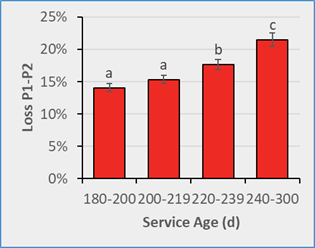
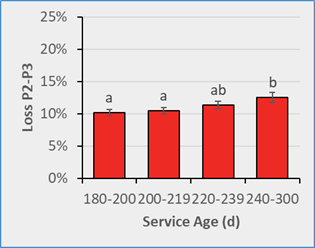
Gilts with a previous heat no service recorded (bred at second estrus or later) have lower losses from first mating to second farrowing, regardless of age at first insemination. An effective HNS is essential to supporting retention across early parities.

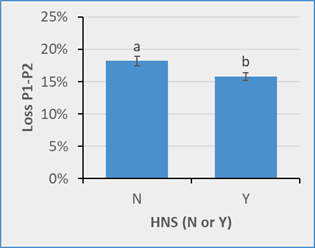
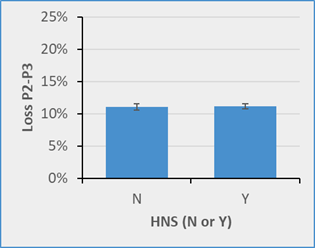
What do we know about parity 1 to parity 2 losses?
The main factor associated with P1 to P2 losses is culling. Gilts bred older have a higher chance of being culled in this timeframe, most often due to reproduction or lameness. Regardless of age, HNS protects retention.
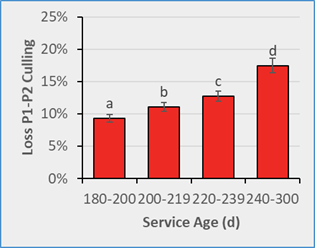
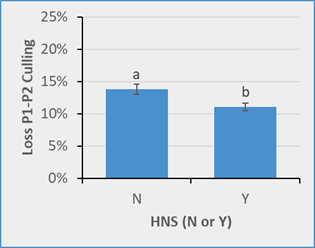
What else do we know about HNS?
Heat no service programs see positive impacts on litter size at first farrowing, resulting in higher total born pigs, and improved farrow rates.
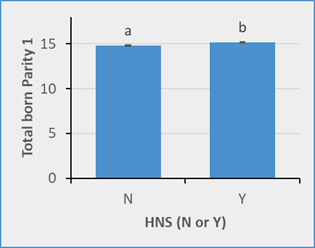

What do the economics look like?
Females breakeven by parity 3, so the more sows that can be retained beyond that – the better financial outcomes. Higher litter sizes and farrow rates also factor into the economic benefit.
To take this a step further, we analyzed how these components work together using age and HNS groupings—what we call gilt fertility quadrants—as the framework. From there, we modeled retention and reproductive productivity through parity 3 to create a Parity 3 Fertility Index.
Results show that gilts bred at older ages have lower Parity 3 Fertility Index. Those bred older and without HNS show the greatest disadvantage, producing up to 19% fewer pigs weaned through parity 3 compared to gilts bred younger with HNS.
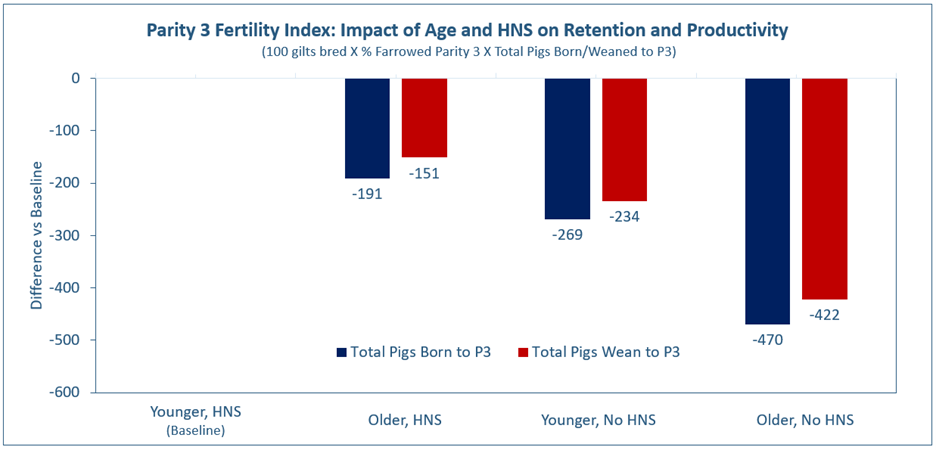
How can farms use this data?
GDU management plays a big role in breeding gilts at a younger age with one heat no service recorded. Puberty induction and boar exposure is critical to get gilts cycling at least once before first service. Tracking and recording age and weight at first HNS is also essential,
Then, the target is for GDUs to breed 90-95% of their gilts at one HNS. Healthy flows will minimize the percentage of gilts bred at an older age range. The chart below builds on the same fertility quadrants described earlier, grouping gilts by age range and HNS status to show how management decisions influence outcomes.
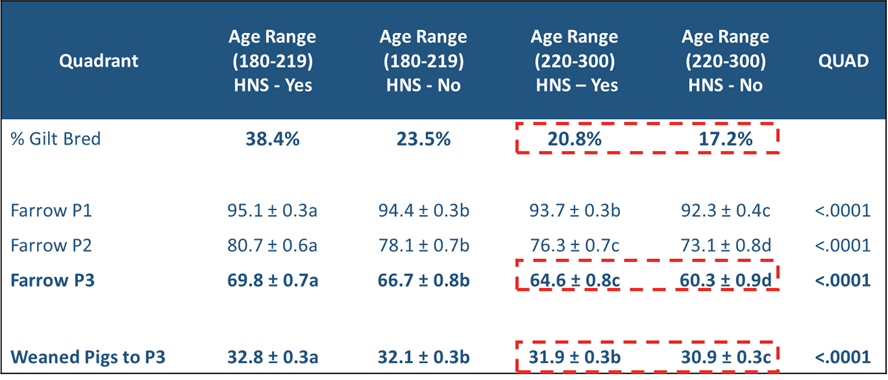
Based on current data, gilts bred at older ages, with or without HNS, show lower retention and fewer pigs weaned up to parity 3 compared to younger-bred gilts. Understanding how GDU management can help shift more gilts into the younger breeding range is key to improving long-term performance.
Not all systems can breed younger due to gilt flow, farm space or health status. If you know you must breed older and heavier, then focus on heat no service first – and consider other management recommendations to mitigate other potential reasons females are falling out of the herd.
Need help with refining your GDU management practices? Reach out to PIC’s technical services team.






